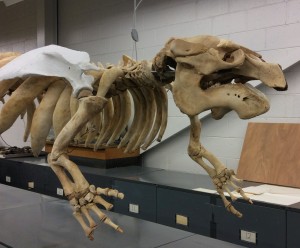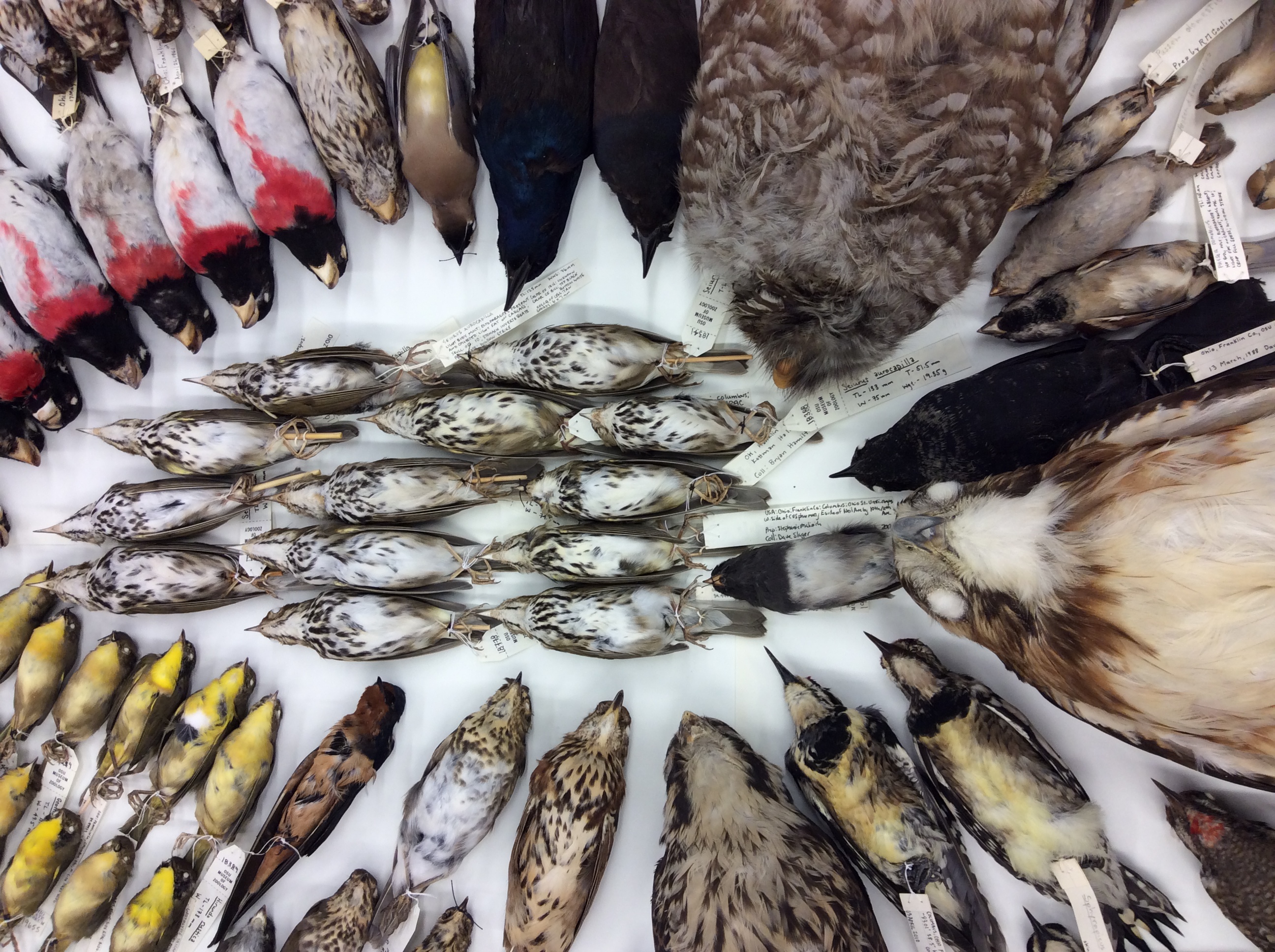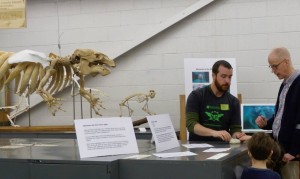Thanks to Andy Yoak, graduate student in EEOB, we now have an articulated skeleton of a manatee on display in the collection! Visit her during our annual Open House on Saturday, February 7th (more information about this event soon!)
Willoughby, an 11-year-old female Caribbean manatee, was donated by the Columbus Zoo and Aquarium. The animal was rescued from the St. Lucie River in Florida after being struck with a propeller from a watercraft in June 1995.
Several bones of the skeleton were missing and we were able to 3-D print some of them and give Willougby a unique look. The assembly process of this skeleton has been captured with a GoPro camera and you can watch the video on YouTube.

Note the part of the lower left jaw that was reconstructed through 3-D printing

Note the right shoulder blade which was reconstructed through 3-D printing
Cool facts about manatees
You may know manatees under their alternate name sea cows which is inspired by their slow pace when grazing underwater. Powering themselves with their strong tails, manatees typically glide along at 5 miles/hr. They eat water grasses, weeds and algae, and lots of them to keep up their massive bodies. An adult manatee weighs on average 800-1,200 pounds at a length of 8-10 feet and feeds 6-8 hours each day.
Despite their bulk, manatees actually have very little fat under their skin which makes them very sensitive to water temperature changes and intolerant to cold waters (below 68 degrees).
Boating collisions are the number one killer of manatees. They are killed by impact injuries from physical force of a boat traveling at a high rate of speed as well as by rotating propellers.
You can find more facts about manatees and how to help them survive here. To see a life manatee, visit the Columbus Zoo and Aquarium.



















